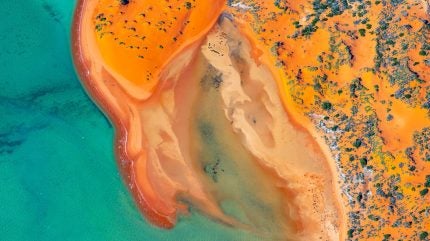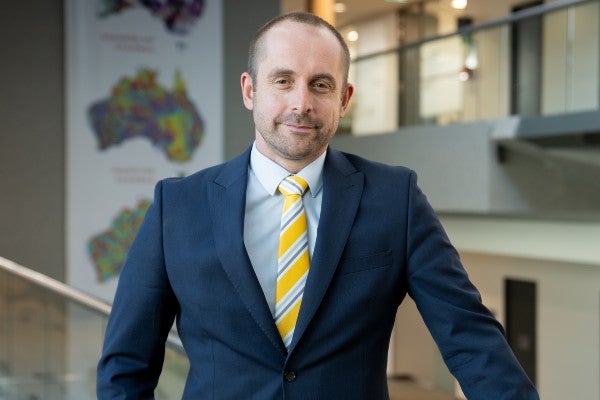
Last year government agency Geoscience Australia was pledged A$566m from the Albanese government to map out the nations’ critical minerals over the next ten years and identify a strategy to develop them.
Specifically, the project is investigating deposits of 31 critical minerals including cobalt and lithium, and five strategic materials including copper and zinc.
Identified as crucial to developing infrastructure in everything from renewable energy to defence and communications, these critical materials are already believed to be abundant in Australia. However, Geoscience figures suggest more than 80% of the country remains under-explored. The initiative will help create the first comprehensive map of the country’s subsurface and subsea resources, as well as the groundwater sources needed to power mineral projects.
We speak to Karol Czarnota, principal science advisor for mineral, energy and groundwater at Geoscience Australia, about where the funding is going, what technologies are emerging as critical to sourcing these materials and why finding the minerals is so important for the nation.
Scarlett Evans (SE): How will the funding be allocated, and what specific projects or initiatives will it support in the coming years?
Karol Czarnota (KC): The A$566m investment is part of a broader commitment of A$3.4bn over 35 years for the Resourcing Australia’s Prosperity initiative.
Using this funding, Geoscience Australia, in partnership with Commonwealth and state and territory governments, will comprehensively map Australia’s onshore resource potential for critical minerals, strategic materials, geological storage of hydrogen and carbon dioxide, and all of Australia’s groundwater systems. Additionally, it will assess suitable offshore sites for renewable energy infrastructure and carbon dioxide storage.
The initiative is structured around four interrelated components: Australia-wide geoscience; national resource assessments; deep dive regional projects and delivery; and awareness raising and engagement.
By 2060, we will have mapped out ‘hot spots’ for Australia’s critical and strategic minerals, as well as other resources needed to support the net-zero transition.
We will also have assessed all of Australia’s groundwater systems, supporting our climate resilience, our agricultural output and water security for communities, industries and the environment.
Finally, we will have investigated 12 deep dive onshore regions with unrealised potential for the resources needed to support Australia’s transition to net zero. This data will be used to complete Australia-wide geoscience datasets, the building blocks used to see and understand what lies below the land surface and seabed.
SE: What kinds of tech are you using to map these materials?
KC: We are integrating multiple techniques to assess resource potential, focusing on mapping the 3D distribution of these materials. These include airborne electromagnetics to map near-surface electrical conductivity, magnetotellurics to map deep electrical conductivity, and passive seismic to measure variations in velocity and distribution of interfaces from the near surface down to the great depths.
We will also be conducting multibeam bathymetry – mapping the depth of the sea floor – as well as chemical and isotopic analyses to measure the concentrations of elements in both earth and groundwater samples and date the minerals and waters.
Surface magnetic resonance will be used to map the depth to the water table, and stratigraphic and hydrogeological drilling will be used to sample subsurface rocks and groundwater.
SE: Why is it important to also map water deposits, as well as potential sites for carbon capture and storage?
KC: As the driest inhabited continent on Earth, Australia is highly reliant on groundwater for town supply, agriculture and mining. Groundwater comprises about 30% of our national water consumption and is the only reliable and cost-effective source of water for communities and industries across 60% of our landmass.
According to the Australian Bureau of Statistics, about 38% of mine development relies exclusively on groundwater. Given this, and the fact that Australia has some of the largest groundwater flow systems in the world, decisions regarding its sustainable management need to be based on robust cross-jurisdictional information.

As for carbon capture and storage, most pathways to net zero require significant increases to these technologies.
To accelerate these projects, more technical geoscience information is needed on the storage potential across Australia to identify where [CCS] is possible and lower the technical risks of entry for industry. In addition, through Resourcing Australia’s Prosperity, Geoscience Australia will unlock and modernise offshore legacy data to assess CO₂ storage potential and support the identification of suitable offshore energy sites.
SE: Are there any anticipated challenges in mapping these materials?
KC: The diversity of resources now required for high-tech applications and to reach net zero has only recently become a focus of geoscience investigations.
Assessing Australia’s potential for these resources requires significant research into how they have been concentrated through natural earth processes, and how to best explore and utilise them for rapidly changing technology.
There are also a range of logistic challenges in collecting data to map Australia’s resource potential, especially in frontier regions where there is little to no infrastructure such as roads and/or telecommunications or independent energy sources.
Other challenges include contacting and negotiating land access, and undertaking data collection activities in seasonal weather windows, while extreme events such as floods and fires may also damage deployed equipment.
SE: After the materials are found, what is the next step in unlocking their potential?
KC: Resourcing Australia’s Prosperity provides precompetitive information for industry to use to inform their exploration, discovery and development. Generally, the most economic deposits get developed first by industry, so a key focus of the initiative is to support the discovery of world-class resources.
This is done through the provision of geoscience information complemented by techno-economic assessments that identify economically viable pathways to resource development. In addition, environmental issues and social concerns can be significant barriers to development.
To inform decision-making in this space, the initiative seeks to provide background information such as soil and groundwater geochemistry, assessments of groundwater systems and relevant geospatial information in an accessible manner for use by communities and governments.
SE: How will the project fit into Australia’s critical minerals strategy?
KC: Resourcing Australia’s Prosperity is designed to support and accelerate the exploration and development of Australia’s resources through government precompetitive geoscience.
A key objective of the initiative is to map and assess all 36 of Australia’s critical and strategic minerals, lowering exploration risks and supporting increased discovery rates. This will help secure an accelerated, long-term pipeline of resource discoveries and developments, and underpin sustained economic growth.


